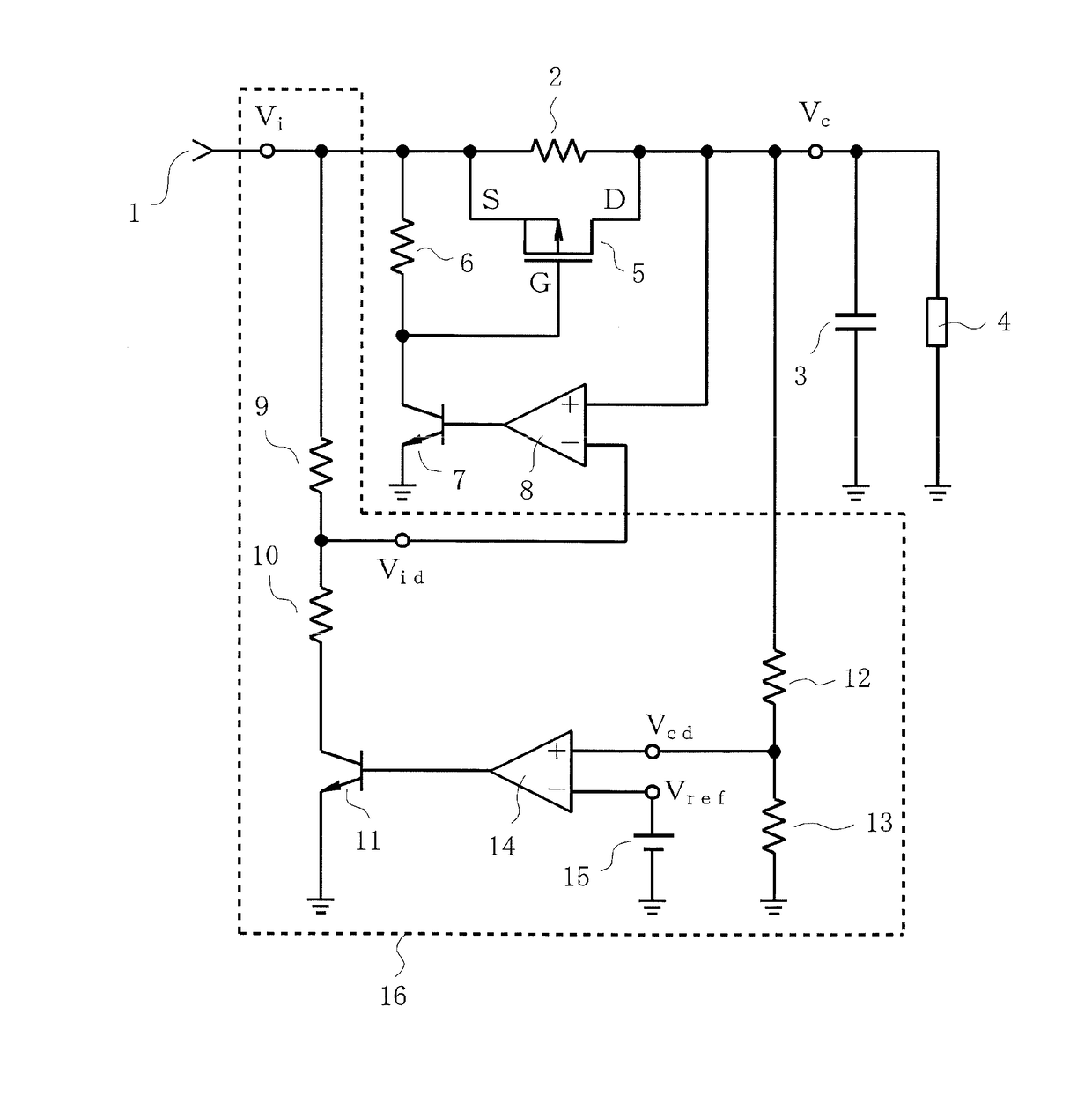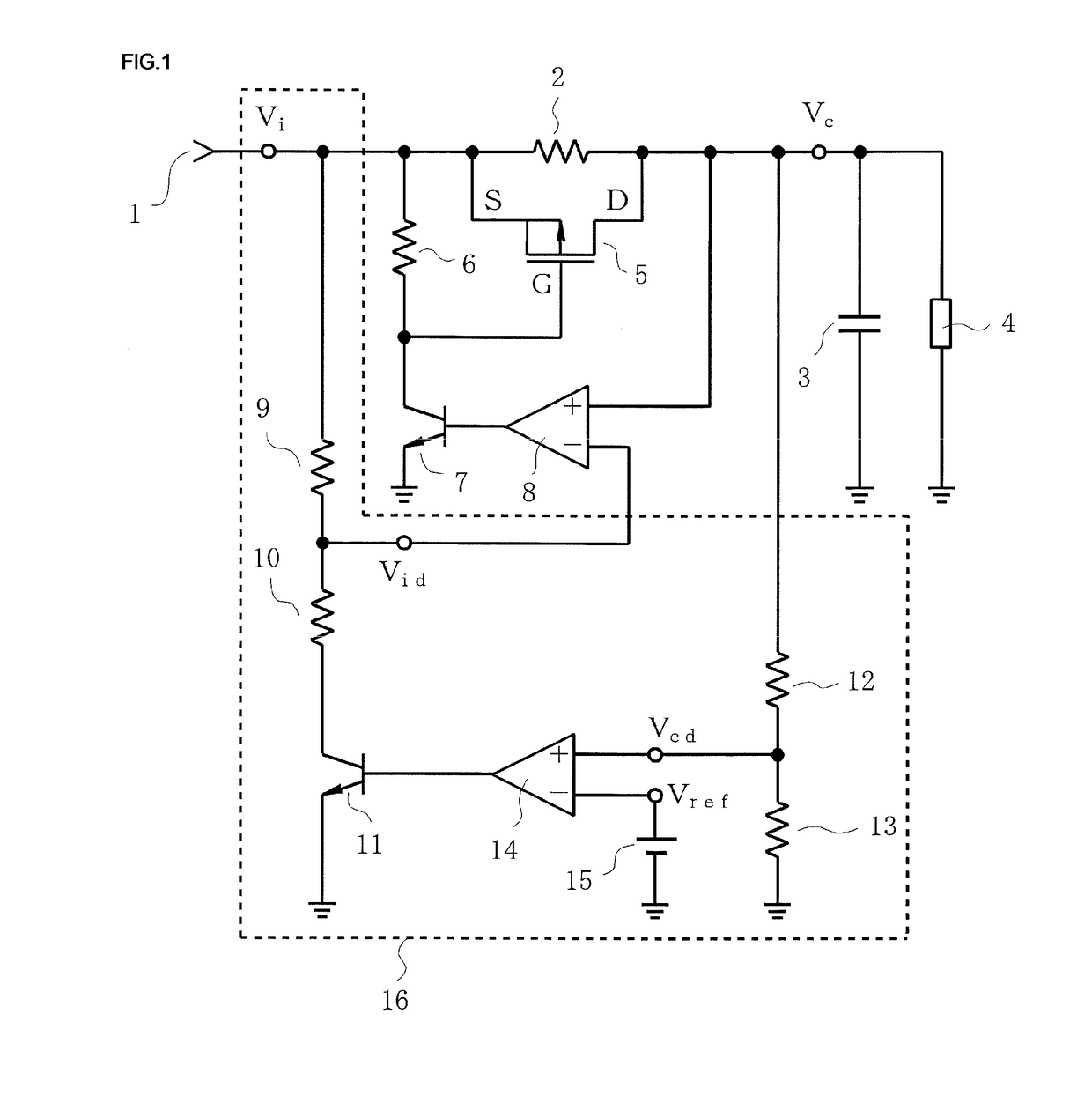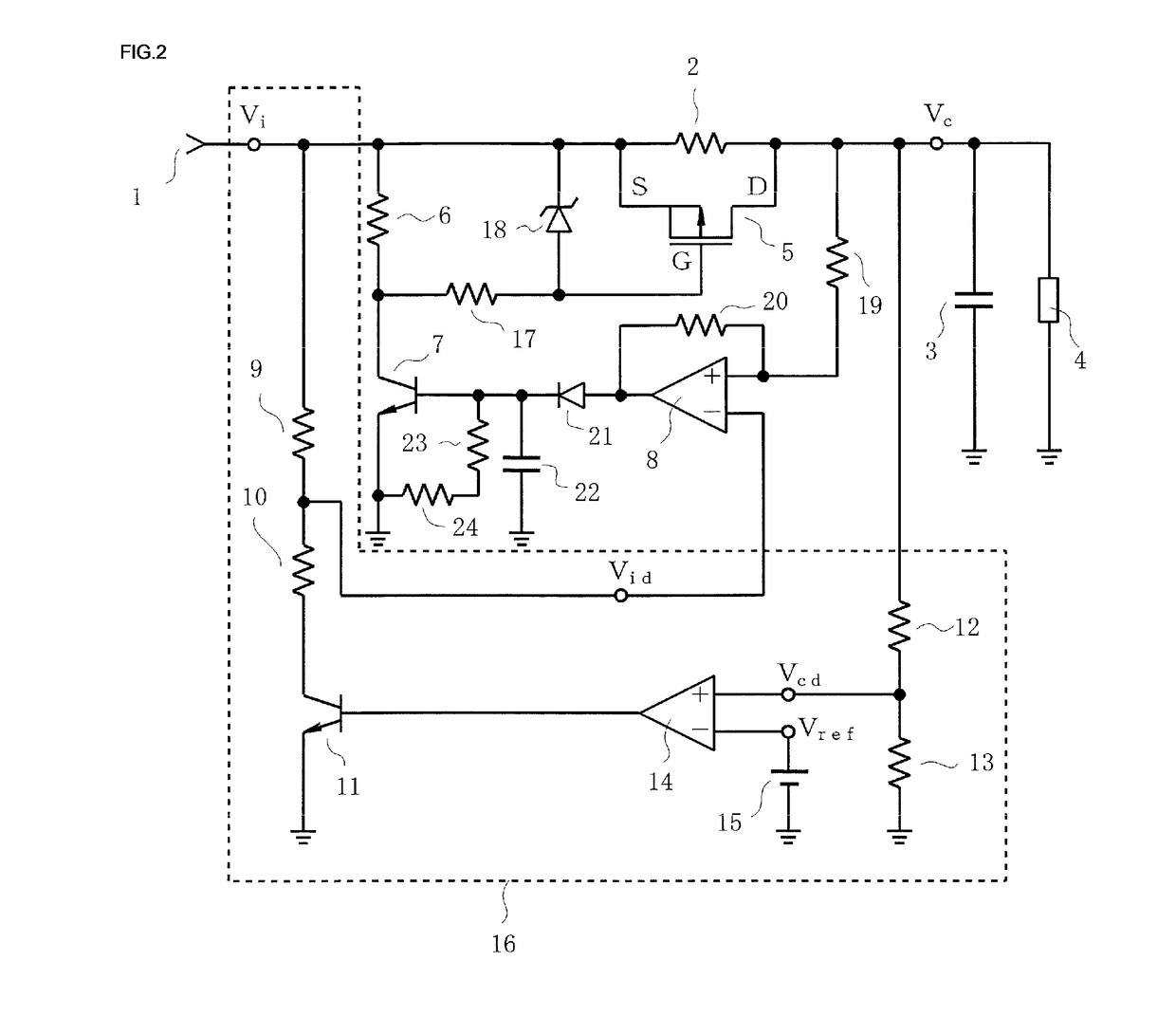Inrush current prevention circuit
a technology of inrush current and prevention circuit, which is applied in the direction of dc-dc conversion, power conversion system, electrical equipment, etc., can solve the problems of excessive inrush current flow, serious damage to capacitors or loads, and damage to power supplies,
- Summary
- Abstract
- Description
- Claims
- Application Information
AI Technical Summary
Benefits of technology
Problems solved by technology
Method used
Image
Examples
first embodiment
[0045]FIG. 1 shows an inrush current prevention circuit according to the disclosure. In FIG. 1, one end of each of capacitor 3 and load 4 is connected via a current limiting resistor 2 acting as a high-resistance element to a power supply input terminal 1, to which a direct current power supply (not shown) is connected.
[0046]The two ends of the current limiting resistor 2 are connected one each to a source S and drain D of a P-type MOSFET (hereafter referred to simply as an FET) 5 acting as a bypass element (a bypass switching element). Also, a pull-up resistor 6 and a second switching element 7 are connected in series between the power supply input terminal 1 and a ground point, and a connection point of the two is connected to a gate G of the FET 5.
[0047]The switching element 7 is a bipolar transistor, and an output signal of a second comparator 8 is applied to a base of the switching element 7. A voltage (output voltage) Vc of one end of the capacitor 3 is applied to a positive i...
second embodiment
[0063]Next, based on FIG. 2, a description will be given of the disclosure.
[0064]In FIG. 2, the same reference sign is allotted to a portion having the same function as in FIG. 1, and a description thereof omitted, and the description hereafter centers on a portion differing from FIG. 1.
[0065]In FIG. 2, a resistor 19 is connected between the drain D of the FET 5 and the positive input terminal of the comparator 8, and a resistor 20 is connected between the positive input terminal of the comparator 8 and an output terminal. The resistors 19 and 20 are for applying hysteresis characteristics to the comparator 8 in accordance with a ratio of resistance values of the resistors 19 and 20.
[0066]Also, a diode 21, capacitor 22, and resistors 23 and 24, which configure a delay circuit, are connected between the output terminal of the comparator 8 and the switching element 7.
[0067]Furthermore, a Zener diode 18 is connected with the polarity shown in the drawing between the source S and gate G...
third embodiment
[0087]Next, FIG. 3 is a circuit diagram showing a main portion of the disclosure.
[0088]The third embodiment envisages a case wherein the rated input voltage range is extremely wide, multiple stages of the second comparator 8, second switching element 7, current limiting resistor 2, and FET 5 of the first and second embodiments are provided, and an inrush current at a time of a bypass operation is restricted by the FETs 5 being sequentially turned on in accordance with the magnitude of the voltage Vc of the capacitor 3.
[0089]In FIG. 3, n (n is a multiple) current limiting resistors 21 to 2n are connected in series between the power supply input terminal 1 and one end of the capacitor 3, and FETs 51 to 5n are connected in parallel to the resistors 21 to 2n respectively.
[0090]The drain D of the FET 51 on the capacitor 3 side is connected to each positive input terminal of n second comparators 81 to 8n provided corresponding to the current limiting resistors 21 to 2n, and each negative ...
PUM
 Login to View More
Login to View More Abstract
Description
Claims
Application Information
 Login to View More
Login to View More - R&D
- Intellectual Property
- Life Sciences
- Materials
- Tech Scout
- Unparalleled Data Quality
- Higher Quality Content
- 60% Fewer Hallucinations
Browse by: Latest US Patents, China's latest patents, Technical Efficacy Thesaurus, Application Domain, Technology Topic, Popular Technical Reports.
© 2025 PatSnap. All rights reserved.Legal|Privacy policy|Modern Slavery Act Transparency Statement|Sitemap|About US| Contact US: help@patsnap.com



